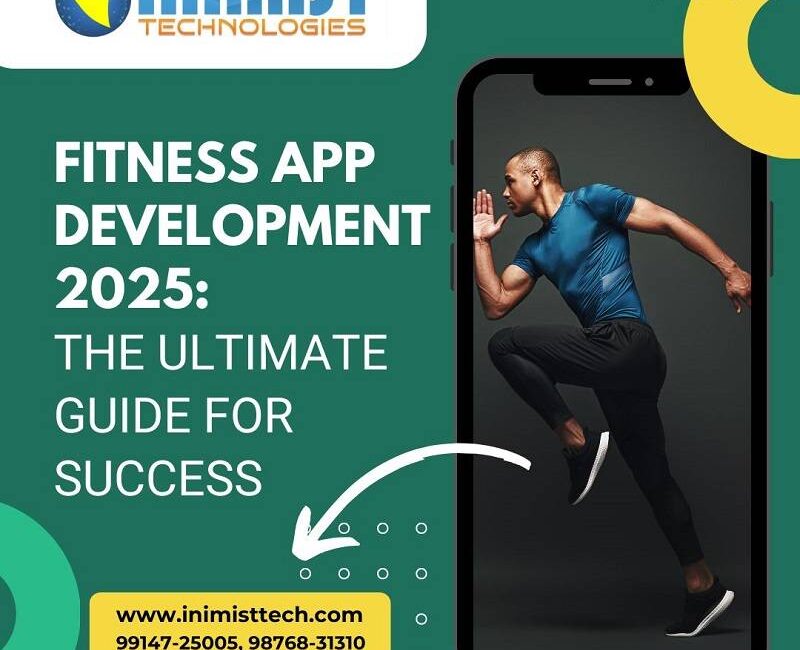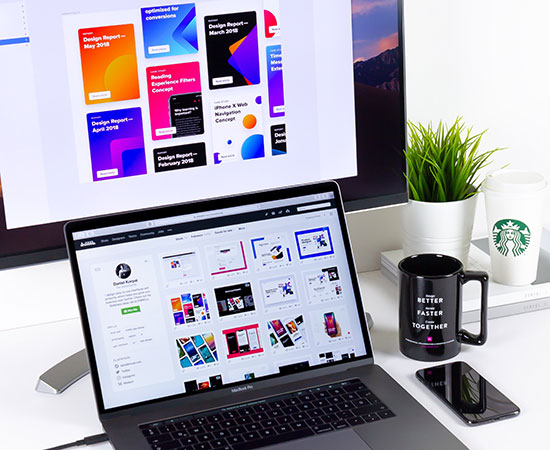
Inimist Tech | November 5, 2025
Fitness App Development in 2025: The Ultimate Guide for Success
In 2025, the global fitness industry will be more digital, more personalized, and more competitive than ever. From AI-powered workout recommendations to real-time health monitoring via wearables, fitness apps are now indispensable tools for users pursuing healthier lifestyles. If you’re planning to develop a fitness app this year, you’re entering a fast-evolving, high-potential market — but to succeed, you need to understand the current trends, technologies, and user expectations.
This ultimate guide will walk you through every crucial step of fitness app development in 2025 — from market insights and must-have features to tech stacks, monetization strategies, and growth tips.

Why 2025 is the Right Time to Launch a Fitness App
The fitness app market is booming — and not just because of New Year’s resolutions. As of 2025:
-
The global fitness app market is expected to cross $20 billion in annual revenue.
-
AI, AR/VR, and wearable tech have made fitness tracking more interactive and real-time.
-
Gen Z and Millennials prefer digital-first fitness journeys — favoring apps over gyms.
-
Post-pandemic habits have solidified home workouts, remote coaching, and hybrid fitness models.
In short, fitness apps are not just a trend — they’re a lifestyle essential.
Types of Fitness Apps You Can Build
Before jumping into development, decide what kind of app you want to create. The most common types of fitness apps include:
-
Workout and Training Apps
Guided workouts, custom fitness plans, and AI-based training programs. -
Nutrition and Diet Apps
Meal tracking, calorie counting, and personalized diet plans. -
Activity Tracking Apps
Steps, heart rate, sleep, and other health metrics synced via wearables. -
Social Fitness Apps
Challenge-based, group training, or leaderboard features for community engagement. -
Personal Trainer or Coaching Apps
One-on-one coaching, scheduling, and video sessions with fitness experts. -
Yoga & Meditation Apps
Focused on mindfulness, breathing exercises, and wellness routines.
Tip: You can combine elements of these into a hybrid app for a more holistic approach.
Top Features to Include in a Fitness App in 2025
User expectations have grown. Basic features aren’t enough. Here are the must-haves:
1. Personalized Onboarding & Goal Setting
Allow users to set fitness goals (e.g., weight loss, muscle gain, flexibility) and personalize the journey from the start.
2. AI-Powered Workout Plans
Use AI to generate workout plans based on user behavior, fitness levels, and progress.
3. Integration with Wearables & Smart Devices
Sync with Apple Watch, Fitbit, Google Fit, or Samsung Health to fetch real-time metrics like steps, calories burned, or heart rate.
4. AR & VR Workouts
Virtual trainers or immersive environments enhance user engagement — especially for home workouts.
5. Video Tutorials & Live Classes
Let users watch pre-recorded sessions or attend live classes with certified trainers.
6. Progress Tracking & Analytics
Weekly reports, progress charts, and performance milestones to motivate users.
7. Gamification
Badges, levels, streaks, and leaderboards can increase daily app engagement.
8. Community & Challenges
Allow users to join fitness challenges, connect with friends, or share their progress on social media.
9. Push Notifications & Reminders
Smart alerts for workouts, hydration, or meal tracking at optimal times.
10. In-App Payments & Subscription Management
Easy upgrades to premium plans, one-time payments for programs, or donation-based tips for trainers.
Tech Stack for Fitness App Development
Here’s a suggested tech stack for building a robust and scalable fitness app:
-
Frontend: React Native or Flutter (for cross-platform), Swift (iOS), Kotlin (Android)
-
Backend: Node.js or Django with PostgreSQL or MongoDB
-
AI/ML: TensorFlow Lite, Core ML, or Google ML Kit (for predictive workouts or voice commands)
-
Wearable Integration: HealthKit, Google Fit API, Fitbit SDK
-
Cloud: AWS, Firebase, or Microsoft Azure (for hosting and storage)
-
Notifications: Firebase Cloud Messaging, OneSignal
-
Payment Gateway: Stripe, Razorpay, Apple Pay, Google Pay
Monetization Strategies That Work in 2025
A fitness app should not just provide value — it should capture value too. Here are the most effective monetization strategies:
-
Freemium Model
Free basic version, with premium features like advanced plans or exclusive workouts. -
Subscriptions
Monthly, quarterly, or yearly plans with tiered access to content. -
In-App Purchases
Sell diet charts, eBooks, merchandise, or custom training plans. -
Affiliate Marketing
Earn commission by recommending health products or supplements. -
Sponsored Challenges or Partner Brands
Collaborate with fitness brands or influencers for in-app sponsorships. -
Ads (Carefully!)
Use ads sparingly — preferably in the free version only — and keep them relevant (e.g., gym wear, health foods).
User Engagement & Retention Strategies
Launching the app is just the beginning. Keeping users hooked is key to long-term success.
-
Onboarding Tutorials: Show users how to navigate your app with clear steps and friendly UX.
-
Streaks and Reminders: Encourage daily log-ins with habit-forming nudges.
-
Weekly Challenges: Add a sense of purpose and motivation.
-
User Feedback Loop: Collect regular feedback and show that updates reflect user needs.
-
Email Marketing: Send monthly summaries, new features, or motivational content.
Analytics You Should Track
-
DAU/MAU (Daily/Monthly Active Users)
-
Churn Rate
-
Workout Completion Rate
-
Goal Achievement Rate
-
Average Session Length
-
In-App Purchase Conversions
-
Feature Usage (which workouts are trending)
Use tools like Google Analytics, Mixpanel, or Amplitude to track and optimize these.
Marketing Tips for a Successful Launch
A great app needs a great launch. Here’s how to make noise in a crowded space:
-
Pre-Launch Buzz: Use teaser videos, landing pages, and early sign-ups.
-
Influencer Collaborations: Partner with fitness influencers for reviews or content.
-
Referral Rewards: Let users earn credits by inviting friends.
-
App Store Optimization (ASO): Optimize your app title, keywords, and screenshots.
-
Content Marketing: Blog posts, YouTube workouts, or fitness tips to drive SEO.
-
Paid Ads: Run Meta, YouTube, or TikTok ads targeting fitness-focused audiences.
Final Thoughts
In 2025, fitness app development isn’t just about tracking calories or steps — it’s about creating digital fitness ecosystems that are personalized, interactive, and sustainable.
By combining the right features, tech, and growth strategies, you can build an app that not only helps users achieve their health goals but also thrives in a highly competitive market.
Whether you’re an entrepreneur, startup founder, or a tech enthusiast — this is your moment to turn fitness into functionality. Make it seamless, make it smart, and most importantly, make it move people.
Latest Posts
-

-

IT Companies in Mohali The Impact of Mobile Apps
July 3, 2025 -

Mastering Mobile App Development in 2025
June 3, 2025 -

-

Best 5 tips for hiring top UX designer
April 3, 2025
